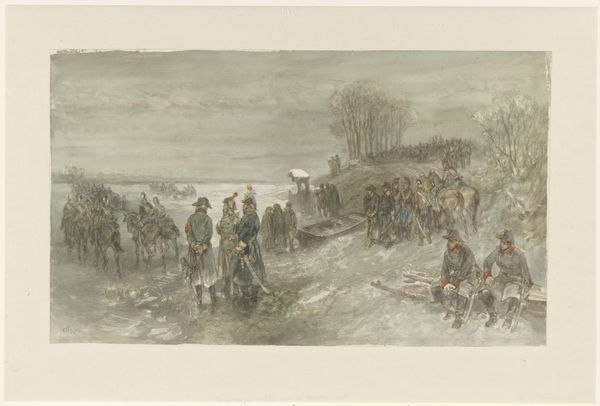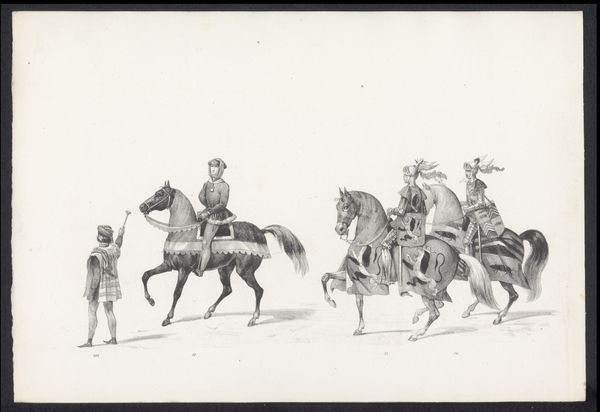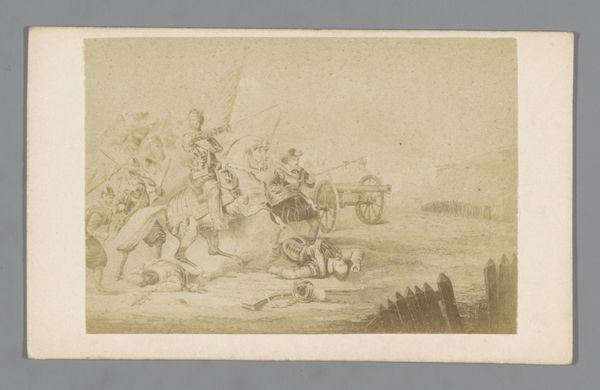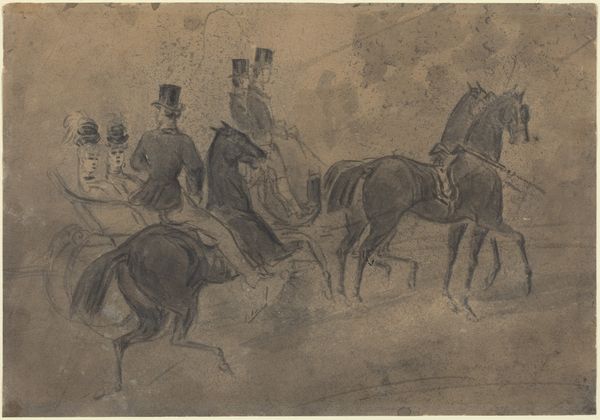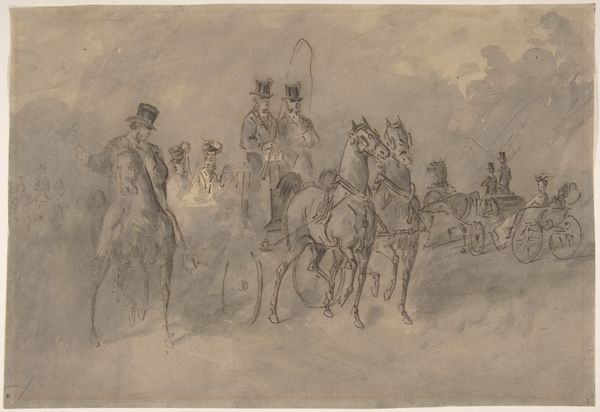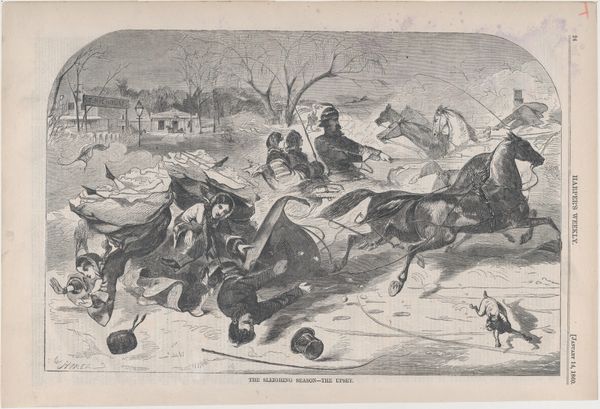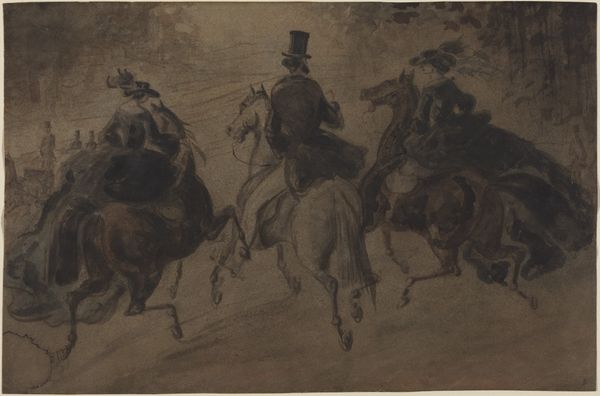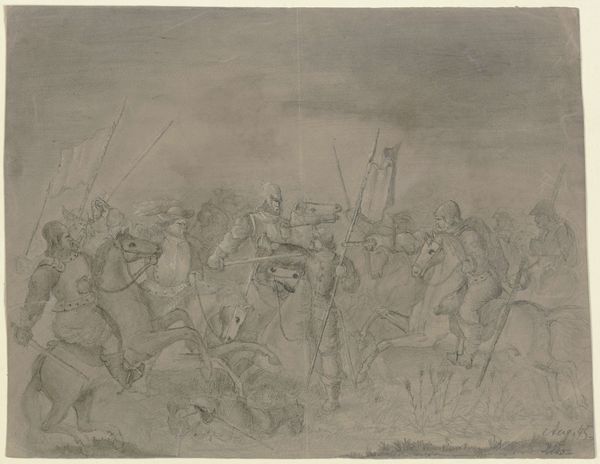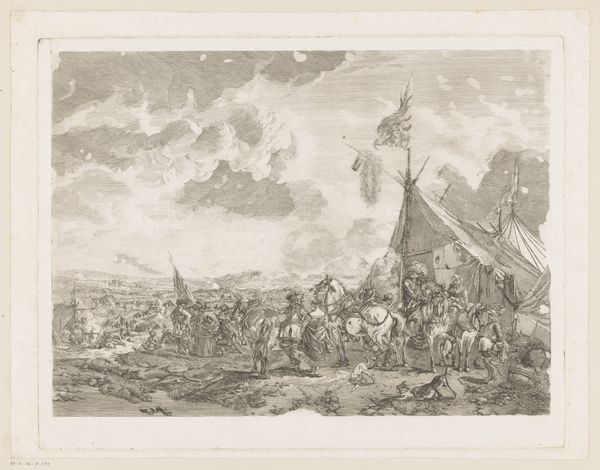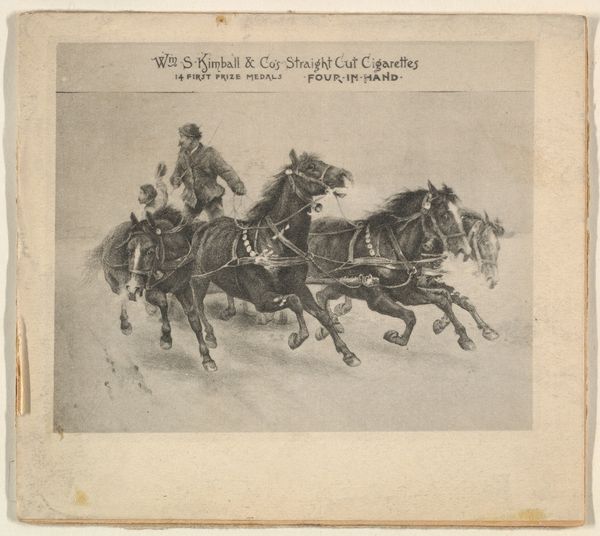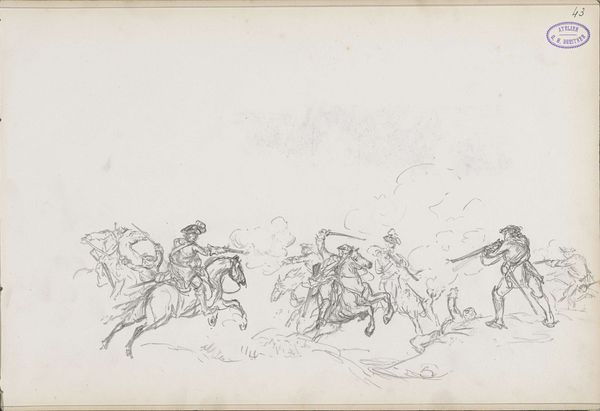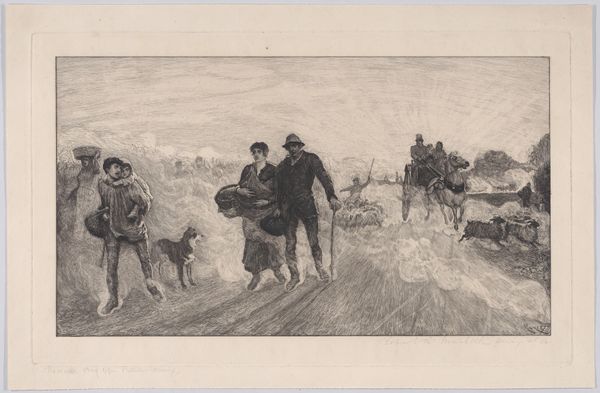
Fotoreproductie van een schilderij van een rijdende cavalerie door vermoedelijk Anton Rovers after 1931
0:00
0:00
drawing, charcoal
#
drawing
#
landscape
#
charcoal drawing
#
figuration
#
charcoal
#
history-painting
Dimensions: height 113 mm, width 173 mm
Copyright: Rijks Museum: Open Domain
Editor: Here we have a photographic reproduction of a painting, supposedly by Anton Rovers, showing a cavalry charge; it's dated after 1931 and rendered in charcoal. I’m struck by the dynamism, but the monochrome palette feels… muted. What catches your eye in this piece? Curator: Formally, it’s quite intriguing. Observe how Rovers, or the original artist, uses the charcoal to create distinct tonal values. The light, almost ethereal background contrasts sharply with the heavily delineated figures of the cavalry, forcing our focus onto their movement. Note the confident strokes used to depict the horses – their forms, though somewhat impressionistic, convey an undeniable sense of forward momentum. Do you see how the composition is almost entirely horizontal, reinforcing that idea of unceasing progression? Editor: Yes, I do. The horizontal lines really push the sense of movement. It almost feels like a film still, capturing a split second. Is there any tension in the composition or is it purely about movement? Curator: There’s tension embedded within the contrasts. Look again at the play of light and dark – the bright void they emerge from hints at something unknown, possibly chaotic. Furthermore, consider the material itself; the starkness of the charcoal on what appears to be paper underscores the fragile nature of this moment, almost as if the cavalry is fleeting, on the precipice of disappearing back into the void. Editor: That's fascinating; I hadn't considered the fragility implied by the materials. Now, I see that the work’s not only about motion but about a fleeting, perhaps perilous, moment in time. Curator: Exactly. Analyzing the formal elements – the composition, the use of light and shadow, the materiality – allows us to move beyond the simple depiction of a cavalry charge, revealing a deeper meditation on time, impermanence, and perhaps, even the inherent anxieties of progress. Editor: That’s given me a completely different perspective; I initially saw dynamism, but now I recognize a complex layering of motion and precariousness within the formal elements.
Comments
No comments
Be the first to comment and join the conversation on the ultimate creative platform.
